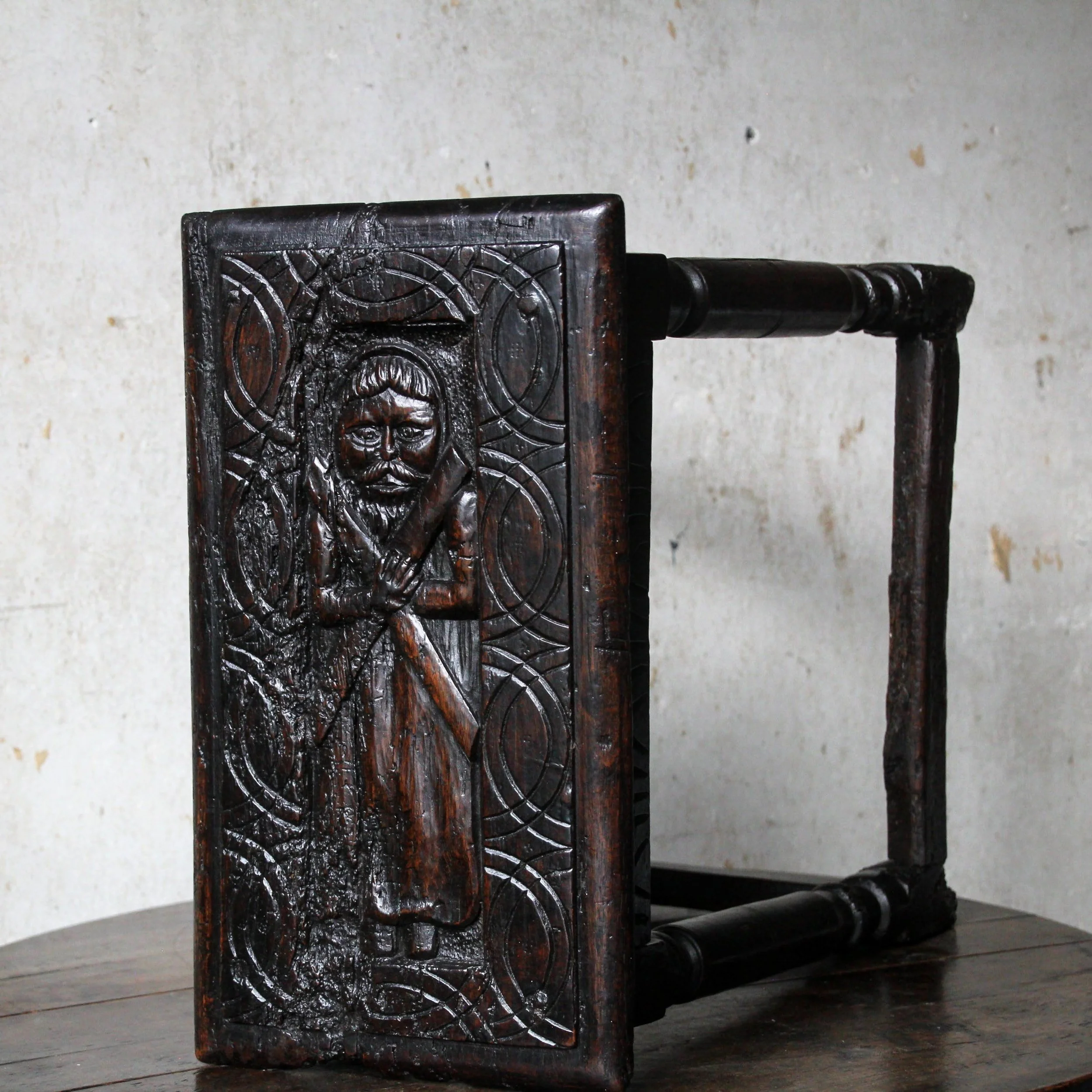 Image 1 of 17
Image 1 of 17

 Image 2 of 17
Image 2 of 17

 Image 3 of 17
Image 3 of 17

 Image 4 of 17
Image 4 of 17

 Image 5 of 17
Image 5 of 17

 Image 6 of 17
Image 6 of 17

 Image 7 of 17
Image 7 of 17

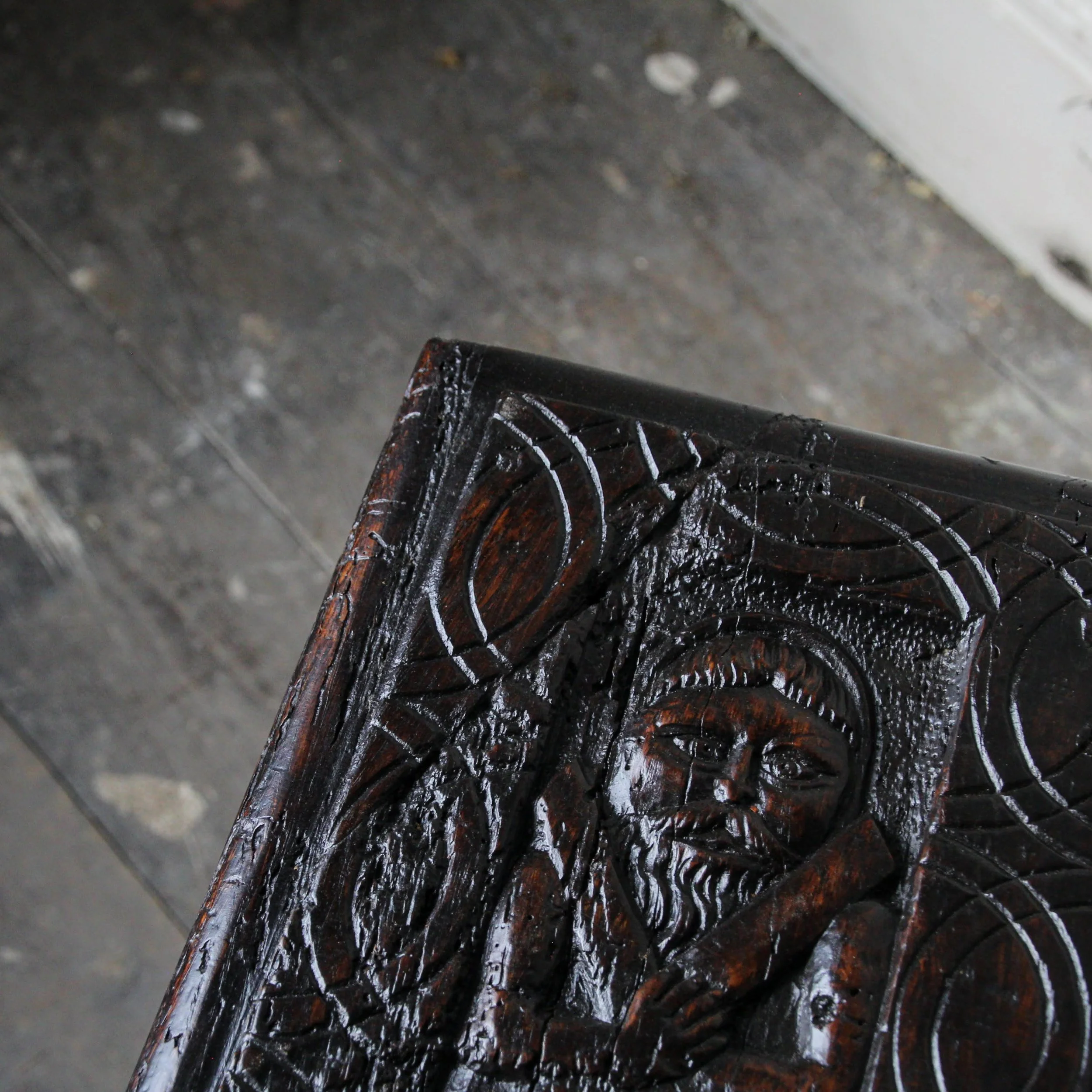 Image 8 of 17
Image 8 of 17

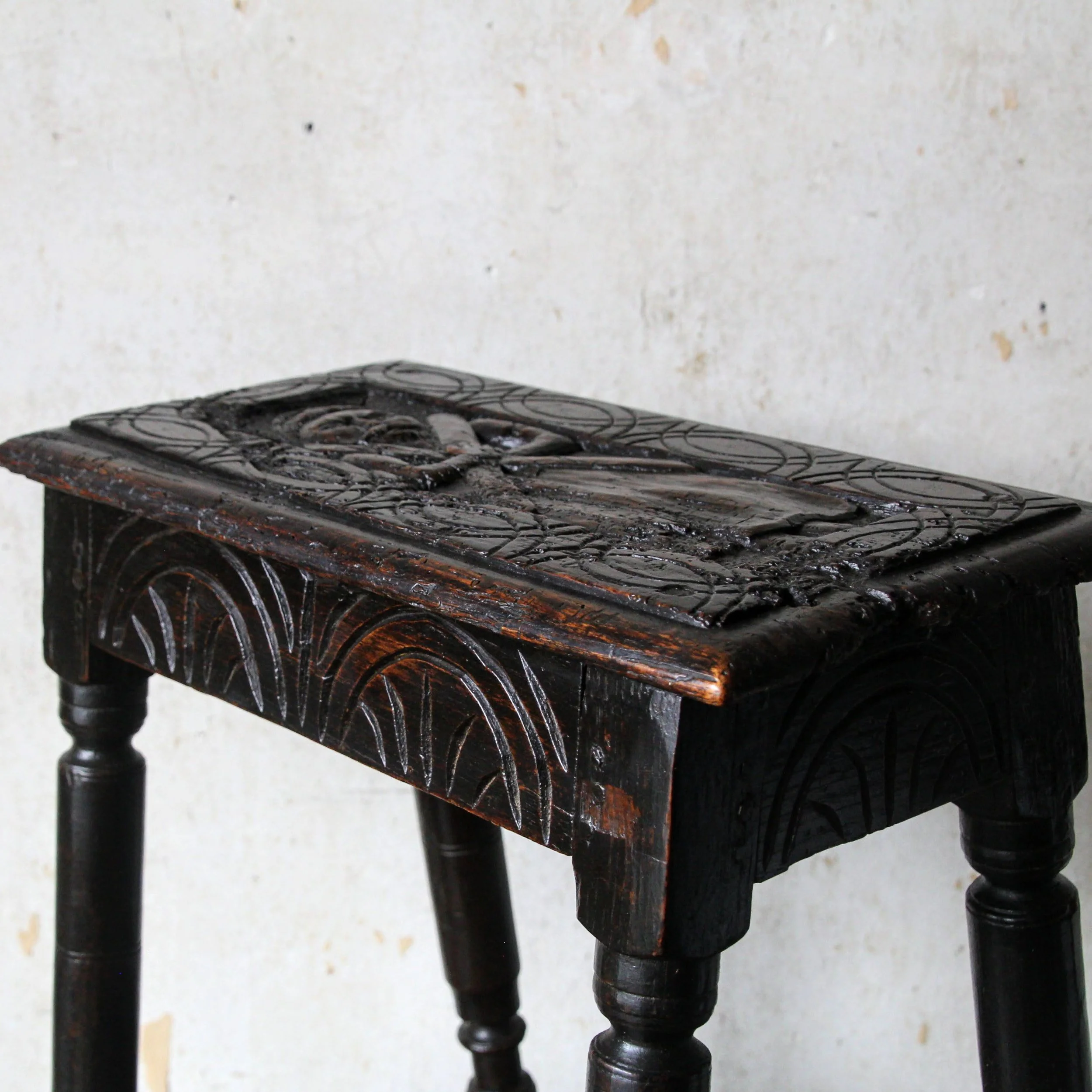 Image 9 of 17
Image 9 of 17

 Image 10 of 17
Image 10 of 17

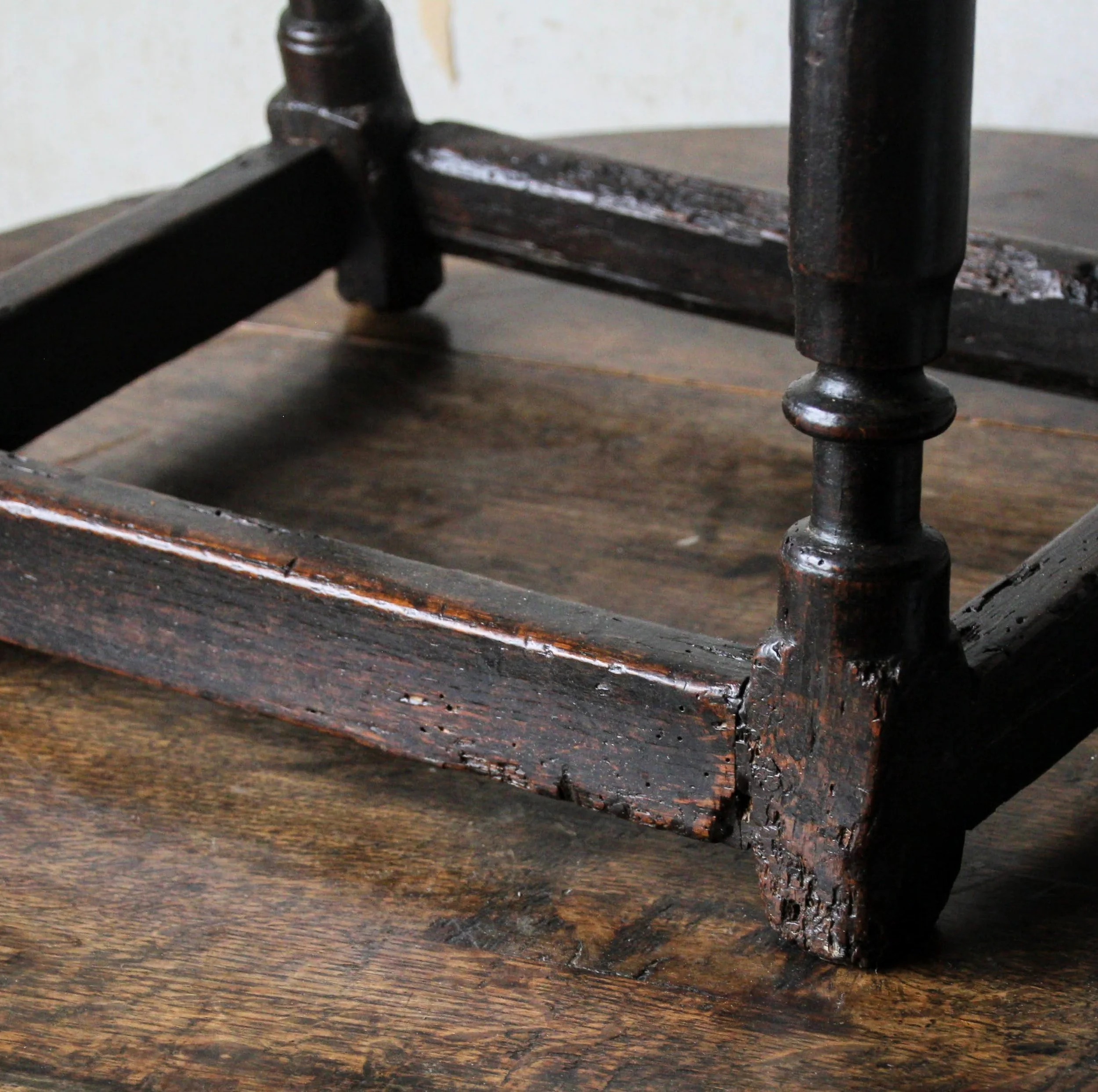 Image 11 of 17
Image 11 of 17

 Image 12 of 17
Image 12 of 17

 Image 13 of 17
Image 13 of 17

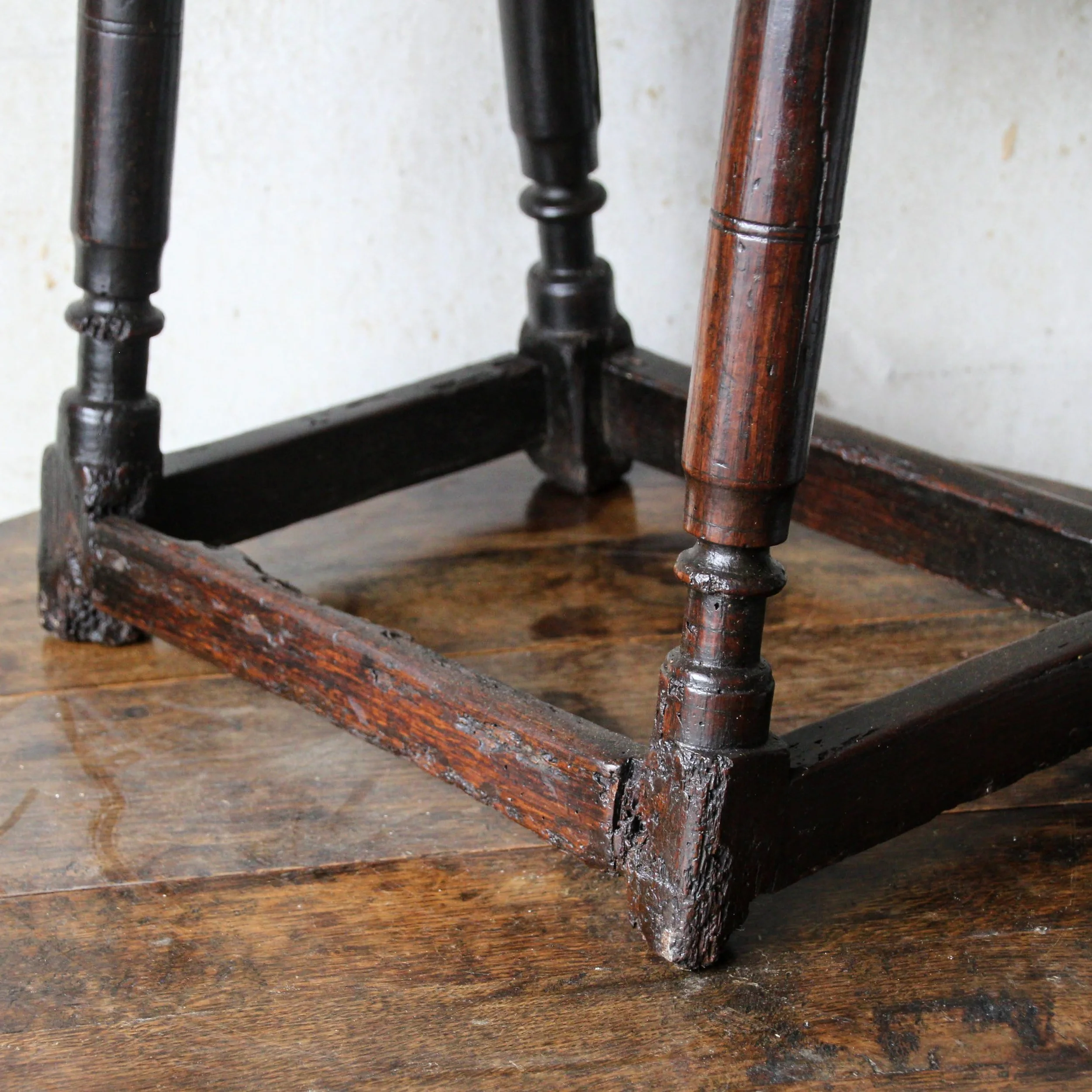 Image 14 of 17
Image 14 of 17

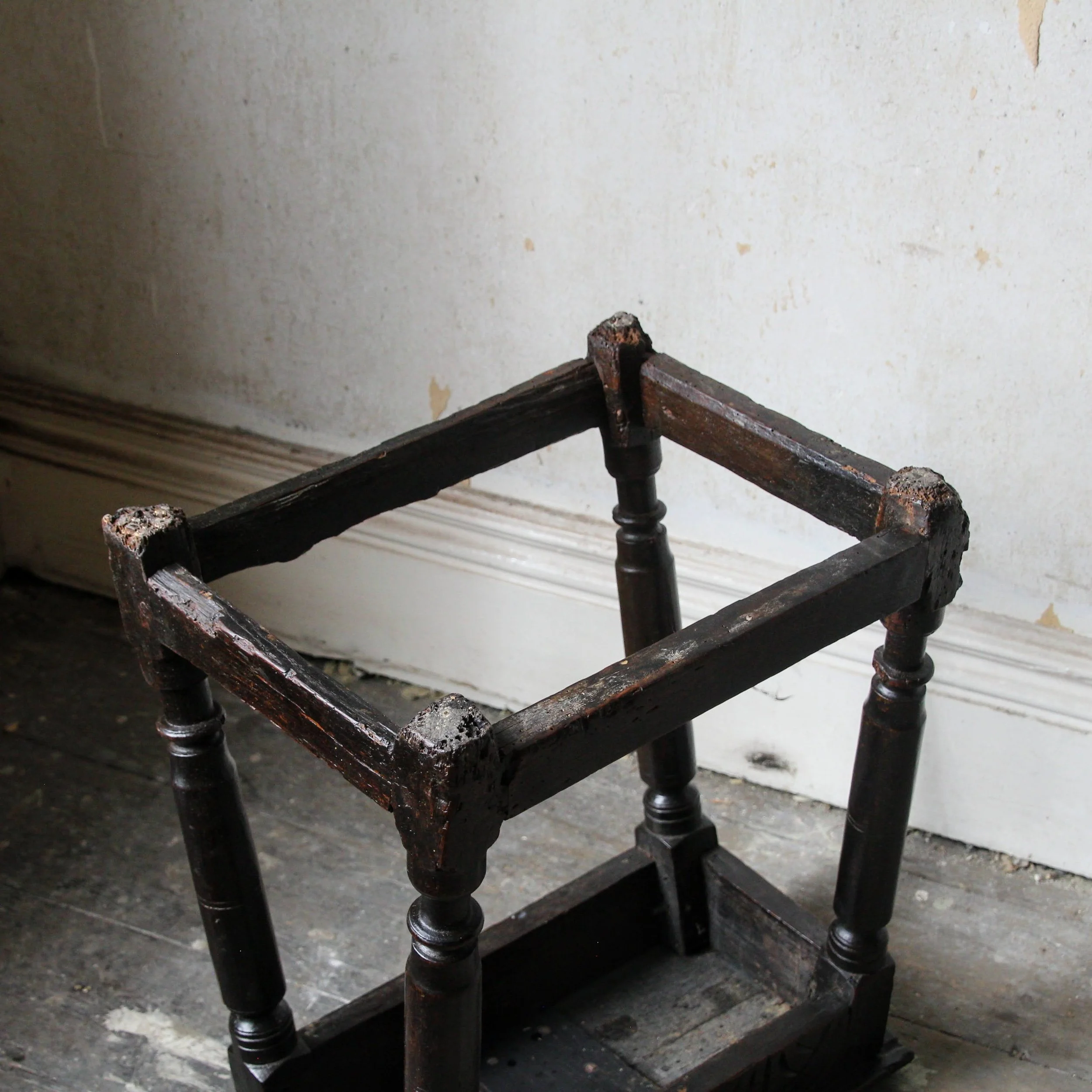 Image 15 of 17
Image 15 of 17

 Image 16 of 17
Image 16 of 17

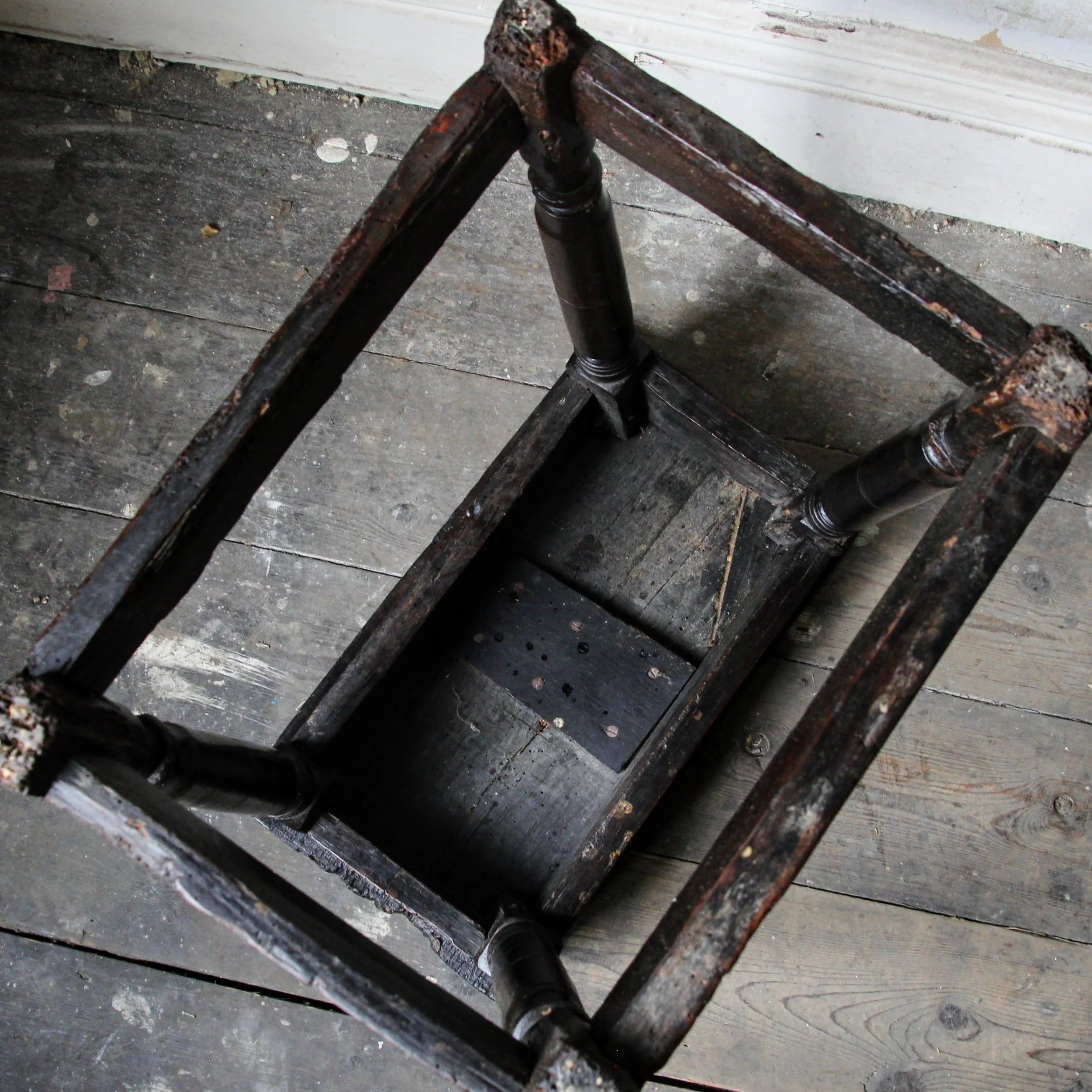 Image 17 of 17
Image 17 of 17


















Very rare and unusual early 17th century oak joint stool, carved gothic top
A very rare early 17th-century English oak joint stool with its original carved Gothic top, depicting a saint holding a cross. I’ve handled many of these stools, but never one with a carved seat; such examples are almost exclusively associated with churches and other ecclesiastical buildings, and show up very rarely. The carved top is original to the stool, dating it to at least the early 17th century, though its late-medieval Gothic style suggests the panel itself is actually even older and was repurposed by the joiner, likely from another piece in the church, when the stool was made. One theory I’ve encountered is that such religious iconography, removed during the Reformation, was hidden away by church wardens and later reused in the early Stuart period — though of course this remains speculation.
Condition is strong and stable, sits well with no wobble. Obvious signs of wear, especially around the legs and on the stretchers- as pictured, but nothing structural. One part of the top has been replaced, as seen in picture 8, also there is a strengthening baton repair to the underside, as shown. Both repairs of some age, probably early 20th century, professionally done.
H 53 cm x W 46 cm x D 25.5 cm
A very rare early 17th-century English oak joint stool with its original carved Gothic top, depicting a saint holding a cross. I’ve handled many of these stools, but never one with a carved seat; such examples are almost exclusively associated with churches and other ecclesiastical buildings, and show up very rarely. The carved top is original to the stool, dating it to at least the early 17th century, though its late-medieval Gothic style suggests the panel itself is actually even older and was repurposed by the joiner, likely from another piece in the church, when the stool was made. One theory I’ve encountered is that such religious iconography, removed during the Reformation, was hidden away by church wardens and later reused in the early Stuart period — though of course this remains speculation.
Condition is strong and stable, sits well with no wobble. Obvious signs of wear, especially around the legs and on the stretchers- as pictured, but nothing structural. One part of the top has been replaced, as seen in picture 8, also there is a strengthening baton repair to the underside, as shown. Both repairs of some age, probably early 20th century, professionally done.
H 53 cm x W 46 cm x D 25.5 cm